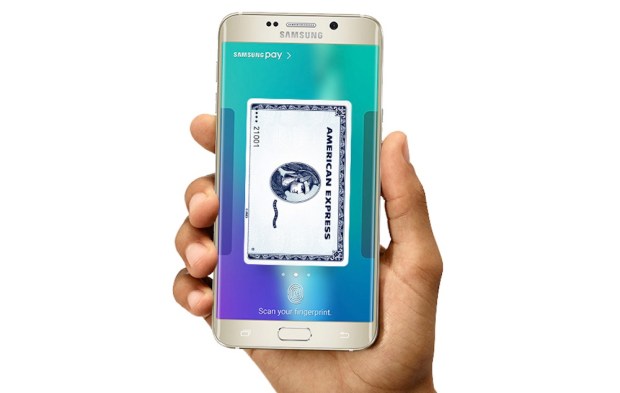Samsung Pay Launching Down Under — With New ‘Value-Added’ Features

Samsung Pay is officially online Down Under today (June 15), and according to Elle Kim, Samsung’s VP and head of global business development for Samsung Pay, this is just a first step. Samsung is doing payments now, but its vision is much bigger and more value-added.
“We want to replace your wallet. We want to go beyond payments and go into things like gift cards. We also think about who we are as a company, and so, when we talk about providing cool payment services, we are starting already to think about how we can pull together all the different things we do from the consumer electronics point of view,” she said.
“In the U.S., we made this announcement where there’s a refrigerator where you can order stuff and there are payments built into our refrigerator, so as we look into the future, how we do services and payments will go beyond Samsung Pay. Samsung Pay is our first entry to earn us the right to the trust of our consumers.”
Kim said that it’s less about the individual products and more about the partnership ecosystem, as Samsung’s goal is to be the “most partner-friendly” company in the world.
“As we start launching in different countries, not only do we want to create localization to make sure it’s relevant to their customers, we want, on a global basis, to keep adding features. I think if all we do is tap, most people will think, ‘Hang on a minute, my card does that,’ so we need to figure out how to innovate and bring more value to consumers,” she said.
With Australia now officially open for business, Samsung Pay is in five markets worldwide and will soon be in six, with a launch in Singapore officially on schedule for tomorrow. The list is forecasted to grow through the rest of 2016 and should include the U.K., Brazil and Canada by the end of the year.
Samsung Pay has named American Express and Citibank as initial launch partners in Australia.
“Citi’s strategy and its global consumer bank strategy is to be a leading digital bank. We think, absolutely, Samsung aligns to that. It’s more than just a payments solution. We find 80 percent of the credit cards in Australia are acquired online, with half of those acquired through a mobile phone. So, we’re seeing more and more consumers are using their mobiles to really live their lives, and we think Samsung Pay is going to be important in that ecosystem,” noted Alan Machet, Citibank Australia cards and consumer lending managing director.
Nick Alexander, American Express JAPA vice president of payment consulting, noted similar thoughts.
“American Express is uniquely placed now that we have digital wallet offerings with the two most popular phones in the market in Australia. As the launch partner of Samsung, we’re proud to be leading the industry and solution to the market. This now means we’re able to offer a digital wallet option to 90 percent of our customers that engage with us on their smartphones today,” he said.
Alexander further noted that a partnership with both Apple and Samsung puts choice in the customers’ hands. Consumers want to pick their phones on the basis of all their options, he noted, and do not want to let American Express “dictate which phone they should use.”
Kim also noted that Samsung is working closely with other financial institutions, including Australia’s four major banks, to integrate Samsung Pay.
Prasad Gokhale, Samsung Australia IT and mobile vice president, however, assured Samsung Pay has been designed as a compliment for banks, not a competitor with them.
“Our philosophy about working with the local banks is very simple: We want to leverage what they have done. If you look at the work we have done with tap-and-pay, we did not go and say drop this or drop that,” he said.
“With Samsung Pay in-app experience, we will work harder, and that’s why it takes a longer time. The other thing I’ll highlight is there is a lot of legacy infrastructure in place in this market that has to be replaced, and it’s happening … So, I think, with our local partners, we don’t seem to have any fights with them. It’s very complementary, and we’re extending the digital transformation by helping the customers to do more mobile payments on the go, and we’re going to bring more CRM to a larger portion of customers.”
